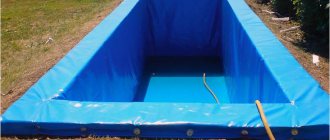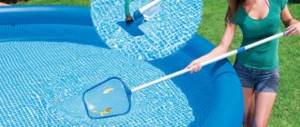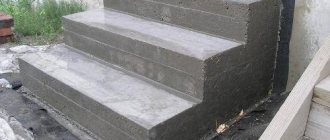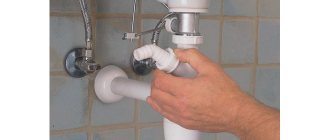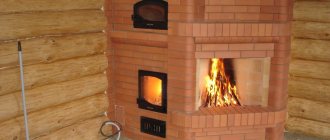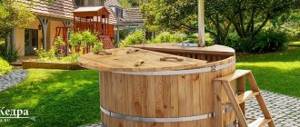Using equipment for heating a pool at the dacha, it is possible to maintain the desired temperature. There are sanitary standards that must be followed. The minimum permissible level is + 24°C. Children's bathing is allowed only at temperatures above 28°C.
Heating a swimming pool at a summer cottage is necessary in the Russian climate
Temperature table
| Category | Temperature regime, оС |
| Up to 7 years | 30-32 |
| Children over 7 years old | 29-30 |
| Adults | 24-28 |
| Wellness treatments | 26-29 |
| Hydromassage | 35-39 |
Heating by electric heater
Electric flow heaters contain built-in heating elements. They are made of metal or anti-corrosion alloy. Water passing through them heats up more and more each time. The case is made of plastic, stainless steel or titanium. Powered by network. Models differ in power.
Electric heating installation diagram
Electric heaters are popular. Designed for small volume bowls.
Devices of this type have a maximum power of 18 kW. They are capable of heating up to 36 cubic meters of liquid.
Leaders of sells
Intex is a company that produces swimming pools and accessories for them. Water heaters are suitable for inflatable ponds.
A manually controlled thermostat is built in to regulate the heating temperature.
Bestway is the second most popular company. The device heats up the water in the dacha pool by 1.5°C in an hour. The equipment is low-power, designed for small volumes. You can buy models with or without a built-in thermostat.
Electric water heater Bestway
Pahlen is an instantaneous water heater with a power of up to 18 kW. For units above 3 kW, a connection to an electrical network with a voltage of 380 Volts is required.
The package includes a relay and thermostat. There is no need to regulate the water in the pool at your dacha. This happens automatically. There is an overheating protection system. Maximum heating up to 40°C.
Pahlen for water heating
Gas heater
As mentioned above, connecting directly to the boiler is fraught with expensive repairs. For this case, special heat exchangers have been developed. They are a small flask that is connected to the heating system through a manifold. Hot water circulates through a snake. Thanks to the pump, which is installed near the pool, the liquid from it is supplied to this sleeve, where the exchange takes place.
Heat exchanger
The article can be used as a practical guide for assembling a specific heater or as a hint for your own developments. We are confident that you will be able to assemble a productive unit.
Heating with wood
You can make a wood-burning pool heater at your dacha with your own hands. To do this, you will need a metal spiral through which water will circulate. A fire is made under it or inside. Operates using a circulation pump.
Water can be heated using a wood-fired boiler
You can buy such a heater. The models are equipped with a combustion intensity regulator and differ in power.
Advantages of the method:
- cheap fuel;
- quick installation;
- ease of use;
- fast heating.
The disadvantage of heating from logs is the complete lack of automation. Constant monitoring of firewood and its burning rate is required. Temperature cannot be set .
There are other fuel heaters - gas, diesel. When operating them, fire safety rules must be observed.
You can make a wood heater with your own hands from scrap materials
Fuel water heaters
Large stationary pools require stationary heating systems, but if you decide to use a collapsible pool, for example, in a country house, you will have to wait a long time until the water in it heats up. In this case, you can make a wood heater. The simplest version of such a device consists of a coil located around a fire. Under the action of the pump, water will flow through it and pour into the pool.
The device will work more efficiently if the coil is placed inside a metal casing and a lattice bottom is made. Such an improvised stove is installed above the pit or legs are welded to it. The ends of the coil pipe should be placed away from the source of the flame so that the hose stretched over them does not melt. Since the water in the pipes heats up very quickly, you will need to connect a circulation pump.
The advantage of such a device is that you can combine business with pleasure - burn garbage and heat water. As for fuel, it can be anything that burns well.
You should not use old car tires as fuel, as when they burn, they release black toxic smoke and create a lot of soot that will settle on the site.
If there is no desire or opportunity to make a homemade water heater, then you can purchase such a factory-made unit.
Heating with solar collectors
To heat a swimming pool at your dacha, you can use solar energy. You can heat water indoors and outdoors. 3-5 hours are enough for it to reach the desired temperature.
Solar collectors for heating water in summer
To create a heated system you need special equipment. Modules in the form of a screen or tube. Operating principle of solar panels:
- black collectors intensively absorb sunlight;
- from the energy received, water reaches high temperatures;
- after warming up to the desired degree, the circulation pump starts.
Models with three-way automatic valves are available. They ensure uninterrupted circulation of coolant throughout the system.
Worth knowing! It is advisable to use solar collectors in those regions where there are many sunny days. In cloudy weather, efficiency decreases.
Installed solar panels for heating water
A similar device can be made using a regular black hose. You will need about 40 meters of material, a circulation pump and a flat area:
- the hose is twisted into spirals and laid at an angle to the sun on the surface;
- a pump is connected to it;
- the structure is connected to the pool.
How to heat water in a swimming pool
0 2854
Swimming is not only pleasant, but also very useful. It helps a person strengthen the cardiovascular system, develop the lungs and get rid of spinal problems. However, water temperature is very important. Too cold water can cause a cold to develop. And too warm water will not have the proper refreshing and tonic effect for the muscles. Therefore, there are temperature standards in the reservoir that allow you to get the maximum benefit from swimming. For children, it is better to maintain a temperature of 25-28 degrees; for athletes, the best temperature is 23 degrees.
Show all content
What methods exist
In summer, the water in the pool is heated naturally. But when the temperature drops, you need to think about heating the water with special means. The easiest way is to install a factory-made heater. Electricity, gas or solid fuel can be used for operation. Next, we’ll take a closer look at how to heat water in a pool at the dacha.
To choose the right device you need to consider:
- Warm-up speed. In order to quickly warm up a pond, electric heaters are usually used. The power of devices directly depends on the price;
- Type of reservoir. Indoor pools are much easier and faster to warm up than open ones;
- Volume. The larger the volume of the reservoir, the more powerful and expensive equipment you need to buy;
- Frequency and seasonality of use. In order to regularly heat a pond, regardless of the season, you will need to install a device with an increased degree of heat transfer.
Electric heater
This is one of the simplest methods to heat the water in the pool. The liquid in the reservoir heats up when it passes through the tubes, which are heated by a dielectric. The device is very compact. The kit includes a small pump that forces liquid into the heating element. The temperature of the tubes themselves is constant, so the heating can be adjusted by adjusting the speed of water movement through the pipes.
Electric pool heater
This method is suitable for small pools, up to 30 m3. The advantage is the low cost of the heater itself, but its use is far from the cheapest, since it consumes a lot of energy.
Heat exchanger
The water in the pool is heated by a heat exchanger by exchanging heat from one liquid to another. Therefore, for this you need to have some kind of water heater somewhere on the site or in the room. This could be a gas water heater or a heating system. The device may look like a cylinder into which liquid from a reservoir is pumped. A spiral passes through the entire structure, along which hot water moves. Thus, the liquid used, for example, for heating a house, shares heat with the reservoir.
The pool heat exchanger is quite economical and easy to use. You can save a lot if you use gas or wood to heat your reservoir. The use of this method has no restrictions on the volume of the reservoir. If the water does not warm up completely, it is enough to simply install an additional heat exchanger. The disadvantage is that the system does not work all year round, since the house is usually not heated in the summer. Therefore, if the weather turns bad in the summer or it rains for a long time and the water cools down, you will have to use additional methods to heat it up.
Heat exchanger Maxi-Flo 75 kW
Heat pump
The pool heater uses natural heat sources. This could be heated soil, a body of water or air. This method is innovative, but not very popular due to its high cost. Depending on the heat source used, the device is located either deep underground or on the surface. It consists of tubes through which a special liquid circulates, which is sensitive to the slightest increase in temperature. The heated liquid heats the refrigerant, which turns into steam. The steam is compressed by the compressor, which releases electricity, which heats the reservoir. The system works continuously. Although it is very expensive, it is so effective that it can even be used to heat a house of up to 300 square meters. Plus, you don’t have to pay anything for use, since natural free energy sources are used.
Pool heat pump
solar collector
This method is also one of the most modern. The pool is heated using solar energy. For this, solar panels are used, which can heat up to 140 degrees. Water circulates inside the coil, absorbs solar heat and returns to the reservoir.
In order to heat the pool sufficiently, you need to accurately calculate the size of the collector. For reservoirs located indoors, the size of the collector should be 50-70% of the volume of the pool. For an outdoor pool you need a collector with a size of 70-100%. In this regard, the first drawback of this method is revealed. If the volume of the pool is very large, then you will have to allocate a large area for solar panels. You can save space and preserve the beauty of the site if you place the collector on the roof. It should be taken into account that the collector must be directed at an angle of 45 degrees to the south. If this is not possible, you can place it to the west or east. However, in this case you will have to install special plates that capture more rays.
Solar collector for swimming pool
Caring for collectors is not difficult. You just need to periodically clean the filters and drain the water if the temperature drops below -25 degrees. The disadvantage is that this method is not effective in winter.
Simple options
Not everyone can afford an expensive water heater. For example, if the pool is installed for a short time. To do this, you can make a pool water heater with your own hands.
Boiler or kettle
To make it enjoyable for children to swim in an inflatable pool, you can use available means. The method is very simple - just heat water in a kettle or saucepan and add it to the pond.
Snail
A snail is a device that is essentially a small collector. Water is heated by sunlight. The principle of operation is so simple that you can make such a heater yourself.
Ready-made options are not expensive, and maintenance is also quite simple. The disadvantages include the fact that the heating efficiency depends on the intensity of sunlight.
Thermal heating blanket
How to heat a swimming pool outdoors? If you do not need to constantly maintain a uniform temperature, you can use a thermal blanket. This is a special fabric that heats up the pond by 4-5 degrees in a couple of hours. At the same time, no electricity is wasted; the liquid is heated by UV rays. The film blocks the sun's rays, while the water reflects them. To heat up not only the top layer, it is enough to turn on the pump.
Solar blanket with heating effect
The disadvantages of this method include the fact that if you have a strangely shaped pool, the canvas will need to be ordered individually or cut to fit. The advantages are the low cost, the use is absolutely not expensive, and as a nice bonus - you can protect the pond from debris and insects.
Heating a reservoir with wood, solid fuel or gas
At the dacha, it is very popular to use wood to heat the water in the pool. Heating ovens can be purchased ready-made or assembled yourself. The liquid is heated by circulating through pipes that are heated by fire. Not only wood, but also any other solid fuel is used as fuel. You can make a gas water heater for a swimming pool in a similar way.
Heating a pool with wood seems very easy and natural, but in practice there is a lot of red tape, especially when using homemade structures.
You will need:
- obtain permission to install in services;
- register your invention;
- take care of fire safety;
- install the chimney and automation yourself.
To extend the service life of heating equipment, the following rules should be followed:
- Do not use electric heaters when the temperature drops to 0;
- Since all water contains a certain amount of minerals, over time the walls of pipes or other containers can become covered with scale. This can provoke failure by creating additional resistance and pressure on the walls. Therefore, parts must be periodically cleaned with a soft brush;
- when using a solar collector, you need to regularly clean the plates from dust, debris or snow;
- To retain heat and, accordingly, reduce heating costs, it is recommended to cover the pond with film at night.
Heating by heat pump
Another heating method is a heat pump. The water warms up quickly. Electricity is consumed to operate the pump and compressor.
Heat pump connection system
Operating principle:
- heat source - industrial, domestic wastewater, thermal springs or flue gases;
- the liquid circulates through a pipeline laid underground;
- then it enters the heat exchanger, where heat is transferred to the refrigerant and it boils;
- Next comes the formation of masses of steam, which are transferred to the compressor and compressed to 25 atmospheres;
- Having passed around the circle, the water returns to the bowl.
Positive aspects of technology:
- high power;
- free energy sources;
- saving money during operation;
- fast heating.
The only negative is the high price of the equipment.
Heat pump system for water heating
